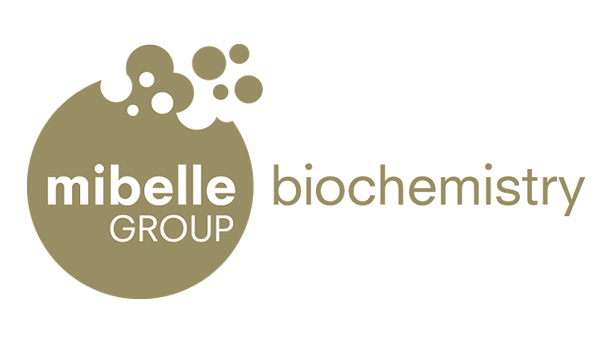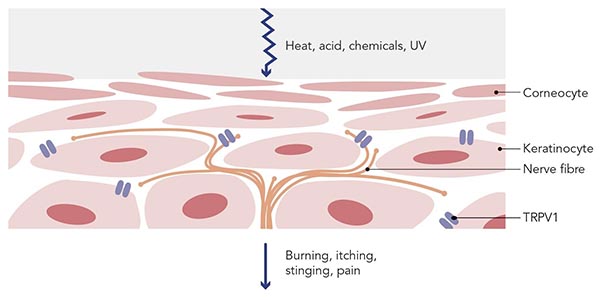Promotional Features
Sea anemone venom for sensitive skin
More than half of the world’s population classifies their skin as sensitive. Skin sensitivity is in fact a broad topic as there are different causes that contribute towards it. There are three main types of sensitive skin that are caused by:
- reduced barrier function often accompanied with eczema and excessive flaking of the skin;
- inflammation with an intact barrier function and;
- skin that overreacts to environmental factors with irritation without barrier impairment and inflammation.
Whereas the first two types are often associated with medical conditions such as atopic dermatitis, type III is the most common type in otherwise healthy individuals and is usually the definition of what is commonly regarded as sensitive skin. The reaction of type III sensitive skin can range from a feeling of slight discomfort to frequent visible signs of skin irritation, such as redness. This type of sensitive skin is characterized by an enhanced reactivity to common stimuli – for example, wind, heat, clothes, sunlight and pollution. The result is skin that feels tight, itchy or even has a burning sensation. The main reason for this reaction is a sensory response that is too strong.
The molecular cause of sensitive skin
What is actually happening in the skin when small changes in the environment lead to such a strong skin response? The molecular cause is a receptor present on the surface of cells called TRPV1, more commonly known as pain receptor. The TRPV1 receptor is responsible for transmitting the sensation of pain upon contact with heat, chemicals and acids. It is present in our skin as this is the first barrier that encounters environmental stresses.
While the activity of the receptor is important to protect us from harm such as reacting with pain and withdrawing the hand when touching a hot surface, an overactivity can be harmful as well. Especially sensitive skin is characterized by a hyperreactive pain receptor which manifests itself as skin that feels too tight, itching and even burning even though there are no harmful influences on the skin.
In addition to being responsible for skin discomfort, TRPV1 plays a role in skin aging. In photo-aged human skin, TRPV1 is often overexpressed. Furthermore, the constant activation of TRPV1, for example through heat and infrared radiation, leads to inflammation as well as to the upregulation of enzymes that destroy collagen in the skin and this could result in premature skin aging. The solution for sensitive skin is therefore to strengthen the tolerance level by reducing the reactivity of TRPV1.
A solution for sensitive skin derived from an unusual source: sea anemone venom
In the never-ending search for interesting new sources for active ingredients, much of the attention has been shifted towards ingredients of marine origin. A large number of marine species have not yet been extensively studied which make new findings that propose beneficial effects for us highly interesting for the cosmetics industry.
One of the fascinating inhabitants of the sea is the sea anemone, known to many as the shelter for clown fish. A lesser known fact is, as the sea anemone is a soft and vulnerable animal, it produces a venom to protect itself from predators and also to immobilize prey. Recently, scientists have found that a protein component of the Heteractis crispa sea anemone venom is a potent inhibitor of the pain receptor TRPV1, which is an interesting approach for sensitive skin.
Making the benefits of a venom component available for cosmetics
Although using the protein from the sea anemone venom as a novel active ingredient for cosmetics is intriguing, the full-length protein is unstable and too big to penetrate into the skin. Moreover, harvesting it from sea anemone venom is not feasible for cosmetic applications.
Therefore, a five amino acid peptide was designed by Mibelle Biochemistry in collaboration with Venomtech, a UK-based company that is an expert in venom-based drug discovery. This pentapeptide contains the active TRPV1 receptor binding site of the sea anemone protein. Another advantage is sustainability as synthetic production of the peptide does not require sea anemones and thus does not interfere with our precious marine environment. Furthermore, the pentapeptide was incorporated into a soft sphere carrier system based on shea butter in order to increase its penetration into the skin and to protect the peptide molecules in the formulation against degradation.
The resulting neurocosmetic ingredient SensAmone P5 was shown to inhibit TRPV1 activation upon chemical stress even more efficiently than the original sea anemone venom protein.
Further placebo-controlled double-blind clinical studies have shown that SensAmone P5:
- Calms overreactive skin after just one application
- Minimizes skin’s response to stress
- Reduces the itching sensation of sensitive skin.







